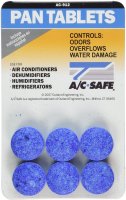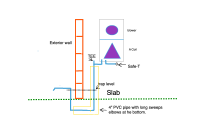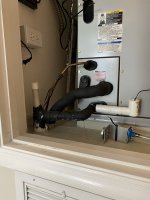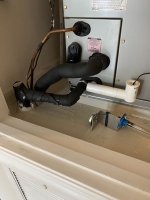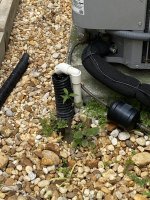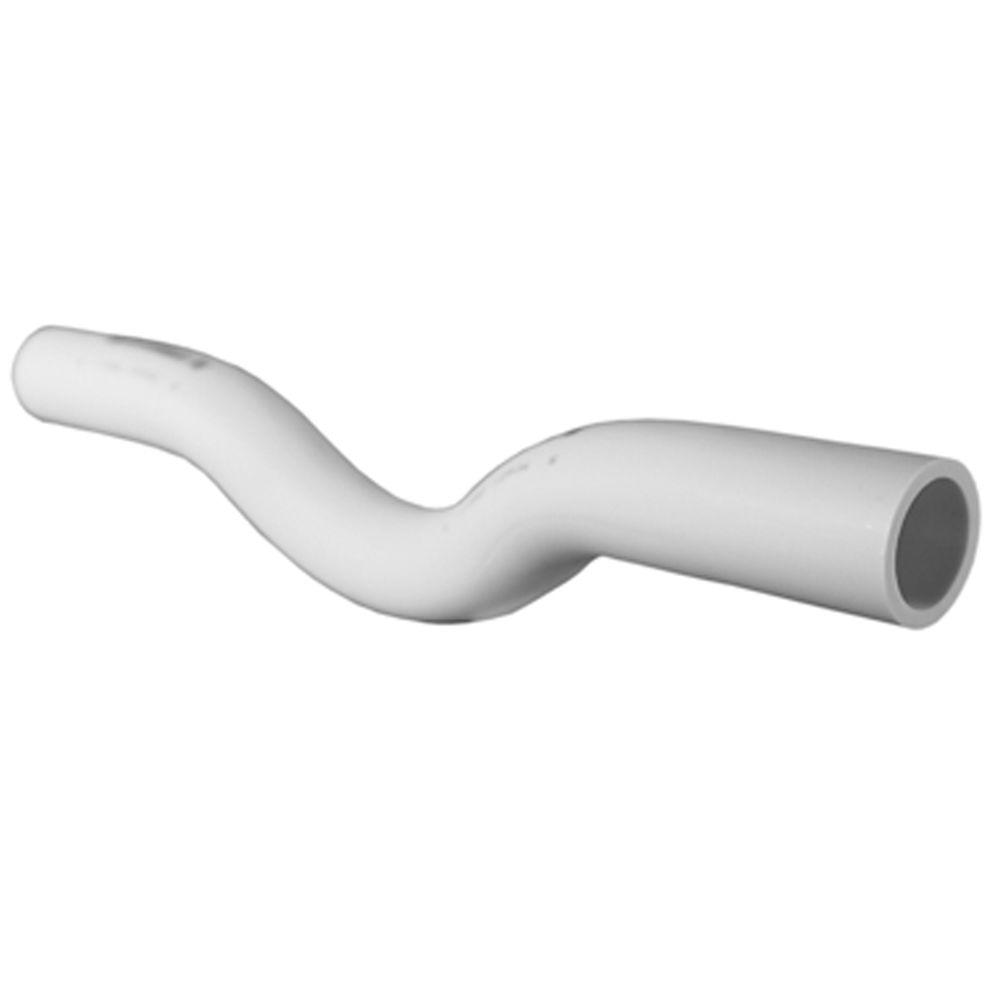liveanddiyinla
New Member
Our a/c has been running more lately with the 100+ temperatures in SoCal the last couple days.
Noticed a GFCI was tripping in the restroom, same circuit as the air handler fan and thermostat. Tripped two times before I checked the air handler closet. The air handler/furnace was wet on the bottom. Looked under the air handler through the return registers and the floor was totally wet, picture attached. Luckily, this was in the evening.

Questions:
1. Any idea why this backup would cause the GFCI to trip? Maybe the filter was damp, causing the fan to work harder...What should be my first step to troubleshoot this?
2. Is the tee on this condensate drain line on the correct side? I want to know if the tee and elbow with the red arrows need to be switched.
3. Does the drain line need to have a p-trap near where it drains outside?
I cupped the tee and blew some air into the tee. The water rose close to the top and drained out the end outside. Just figured that the tee should be on the other side, not sure if it makes much of a difference.
I'm planning on taking apart the air handler to check out the inside in the morning. We cleaned the evaporator 1-2 years ago. Thanks for any advice.



Noticed a GFCI was tripping in the restroom, same circuit as the air handler fan and thermostat. Tripped two times before I checked the air handler closet. The air handler/furnace was wet on the bottom. Looked under the air handler through the return registers and the floor was totally wet, picture attached. Luckily, this was in the evening.
Questions:
1. Any idea why this backup would cause the GFCI to trip? Maybe the filter was damp, causing the fan to work harder...What should be my first step to troubleshoot this?
2. Is the tee on this condensate drain line on the correct side? I want to know if the tee and elbow with the red arrows need to be switched.
3. Does the drain line need to have a p-trap near where it drains outside?
I cupped the tee and blew some air into the tee. The water rose close to the top and drained out the end outside. Just figured that the tee should be on the other side, not sure if it makes much of a difference.
I'm planning on taking apart the air handler to check out the inside in the morning. We cleaned the evaporator 1-2 years ago. Thanks for any advice.

